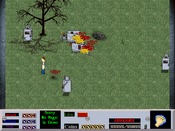Reply to Re: PI
If you don't have an account, just leave the password field blank.
Neither one is wrong. One just yields a non-rational result.
x^2 + 2 = 0
x^2 = -2
sqrt(x^2) = sqrt(-2)
x = i * sqrt(2) -- or -- x = sqrt(2) * i
Or you can have
x^2 - 2 = 0
x^2 = 2
sqrt(x^2) = sqrt(2)
x = sqrt(2)
If you were to then graph f(x) = sqrt(x), you would find that the graph is only in quadrant I and that at the coordinate (2,x), x is 1.41421 (ca. sqrt(2)).
Now, if you were to graph f(x) = i * sqrt(x), you would find that the graph is only in quadrant III and that at the coordinate (-2,x), x is -1.41421 (ca. i * sqrt(2)).
Therefore, since f(x) is equivalent to a negative-negative number, both can be changed to positive (at the removing of i), and you will have the same answer. There you go. Both equations yield the same answer, just in different ways of thinking.

x^2 + 2 = 0
x^2 = -2
sqrt(x^2) = sqrt(-2)
x = i * sqrt(2) -- or -- x = sqrt(2) * i
Or you can have
x^2 - 2 = 0
x^2 = 2
sqrt(x^2) = sqrt(2)
x = sqrt(2)
If you were to then graph f(x) = sqrt(x), you would find that the graph is only in quadrant I and that at the coordinate (2,x), x is 1.41421 (ca. sqrt(2)).
Now, if you were to graph f(x) = i * sqrt(x), you would find that the graph is only in quadrant III and that at the coordinate (-2,x), x is -1.41421 (ca. i * sqrt(2)).
Therefore, since f(x) is equivalent to a negative-negative number, both can be changed to positive (at the removing of i), and you will have the same answer. There you go. Both equations yield the same answer, just in different ways of thinking.








